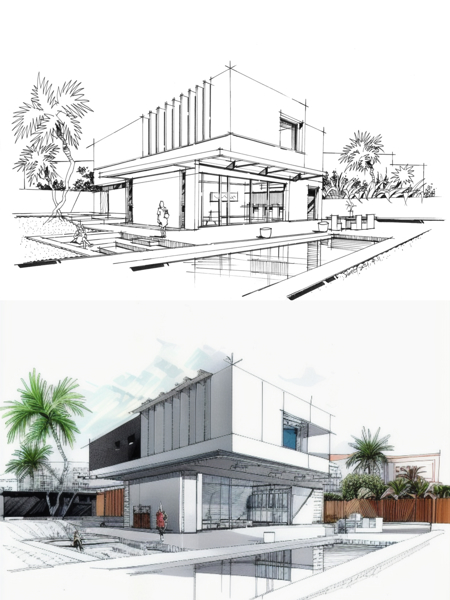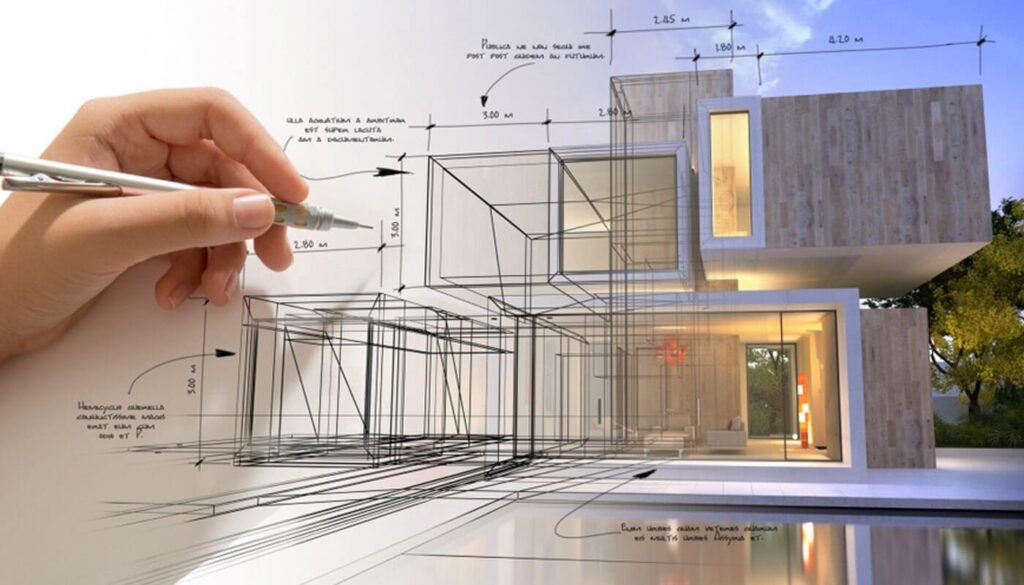Comprehending the Collaborative Refine In Between Architects and Designers in Modern Building And Construction Projects
The joint process between designers and engineers is vital in modern-day building and construction tasks, as it integrates style intent with engineering feasibility. This collaboration not only affects the aesthetic and useful aspects of a task but likewise plays an important function in dealing with sustainability challenges. By utilizing efficient interaction strategies and leveraging advanced technologies, such as Building Details Modeling (BIM), teams can function much more cohesively. The complexities of this collaboration often present one-of-a-kind challenges that can hinder development. Checking out these characteristics exposes insights that could significantly impact job end results and overall market standards. cda architects.
The Importance of Partnership
The collaborative harmony in between architects and designers is vital for the successful understanding of any type of building and construction project. This partnership brings together unique experience and perspectives, making it possible for the assimilation of cutting-edge style with useful design options. By collaborating, designers and designers can make sure that a project not only fulfills visual and functional needs however likewise complies with security, sustainability, and financial restraints.
Partnership promotes a common vision, promoting the positioning of goals and expectations from the beginning. This placement is vital in addressing potential challenges and mitigating risks that might arise during the task lifecycle. Furthermore, a joint strategy enables the reliable allotment of resources, enhancing both time and expense.
The significance of partnership includes the repetitive procedure of design and building and construction, where feedback from designers can notify architectural decisions, bring about even more feasible and lasting layouts. Conversely, engineers can inspire designers to think artistically concerning how to achieve architectural honesty without compromising artistic intent. Inevitably, the collaborative partnership in between engineers and engineers is not simply helpful; it is essential to the creation of high-quality, practical, and ingenious built settings that meet the requirements of society.
Interaction Techniques and Devices
Effective interaction strategies and tools are crucial for cultivating collaboration between architects and engineers throughout the task lifecycle. Developing clear networks of communication is necessary to make sure that all staff member are aligned with project goals, timelines, and duties. Regular conferences, both in-person and virtual, give opportunities for stakeholders to review progress, address concerns, and make informed decisions.

Furthermore, taking on collective communication devices, such as Slack or Microsoft Teams, enables for instantaneous messaging, documents sharing, and ongoing discussions, promoting an extra active response to arising problems. File management systems also play a vital role in arranging job documentation, making certain that all employee have access to the most recent details.
Shared Goals and Job Vision
A combined project vision functions as the foundation for effective partnership in between engineers and designers (cda architects). This shared vision not only straightens the efforts of both celebrations however additionally develops a common framework for decision-making throughout the job's lifecycle. By verbalizing clear goals, stakeholders can efficiently browse the intricacies of modern-day building jobs, making certain that both aesthetic and practical demands are satisfied
Developing common objectives includes open dialogue and a complete understanding of each discipline's payments. Engineers commonly concentrate on style intent, spatial partnerships, and individual experience, while designers emphasize architectural honesty, systems performance, and compliance with regulations. When these viewpoints are lined up, the outcome is a cohesive project that complies with both innovative aspirations and technical feasibility.
Furthermore, a distinct job vision fosters liability amongst employee, encouraging each participant to take ownership of their duty in achieving the preferred end result. Routine check-ins and collaborative workshops can better strengthen this dedication, enabling modifications to be made as the job advances. Eventually, a common vision not just boosts synergy yet additionally raises the quality of the last deliverable, bring about successful job completion.
The Function of Technology
Leveraging innovation has actually come to be vital in boosting collaboration between architects and designers. The combination of sophisticated software program tools promotes real-time communication and information sharing, enabling groups to work extra successfully and successfully. Building Details Modeling (BIM) stands out as a critical modern technology, enabling both engineers and engineers to create comprehensive 3D versions that envelop layout intent and architectural integrity. This common visual representation decreases misconceptions and simplifies the decision-making procedure.
Moreover, cloud-based systems useful link allow smooth partnership, permitting task stakeholders to gain access to and upgrade project information from anywhere. This cultivates a society of openness and accountability, as modifications can be tracked and evaluated in real-time. Additionally, mobile applications additional boost communication, offering on-site teams with prompt access to project specs and updates.
Arising innovations such as expert system and equipment learning are likewise starting to contribute in anticipating evaluation, aiding groups recognize potential problems prior to they develop. Inevitably, the role of technology in architecture-engineering partnership not only my link improves process performances however also boosts development, resulting in more effective project end results. By accepting these technological developments, designers and designers can make sure a more cohesive and productive collective process throughout the building lifecycle.
Study in Successful Collaborations
Many case research studies show the profound influence of efficient collaborations between architects and designers on job outcomes. One noteworthy example is the collaboration on the High Line in New York City, where landscape designers, engineers, and city planners worked together to transform an abandoned rail line into a dynamic public park. This multidisciplinary strategy not only improved the aesthetic high quality but additionally made certain structural safety and environmental sustainability.

The Burj Khalifa in Dubai better shows the relevance of collective efforts - cda architects. The combination of architecture and engineering know-how made it possible for the job group to achieve unmatched heights while sticking to safety policies and aesthetic vision
These instances underscore the relevance of communication, count on, and shared goals. In today's complicated building environment, such collaborations are vital to browsing challenges and providing tasks that satisfy both useful and visionary goals.
Final Thought
Finally, the collaboration in between engineers and engineers is necessary for the success of contemporary building tasks. Effective interaction strategies, a common project vision, and the assimilation of sophisticated innovations are vital elements that promote this collaboration. By cultivating a culture of responsibility and leveraging tools such as Building Information Modeling (BIM), teams can browse project intricacies, ensuring that aesthetic, functional, and published here sustainability purposes are achieved. Inevitably, this harmony results in cutting-edge and successful task results.